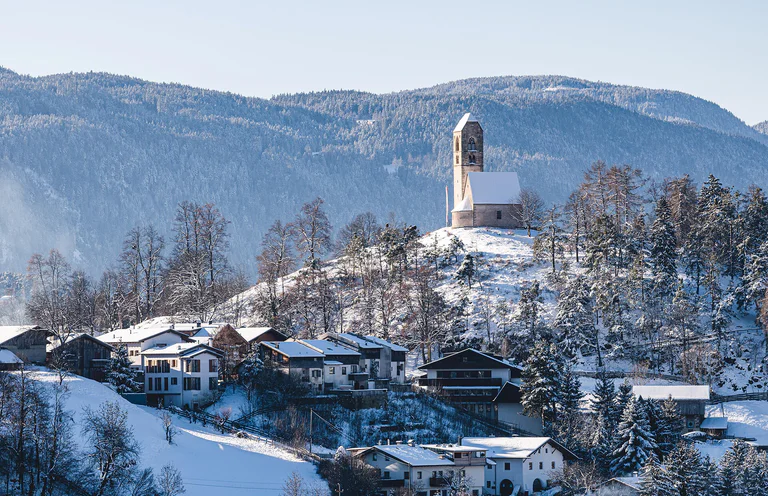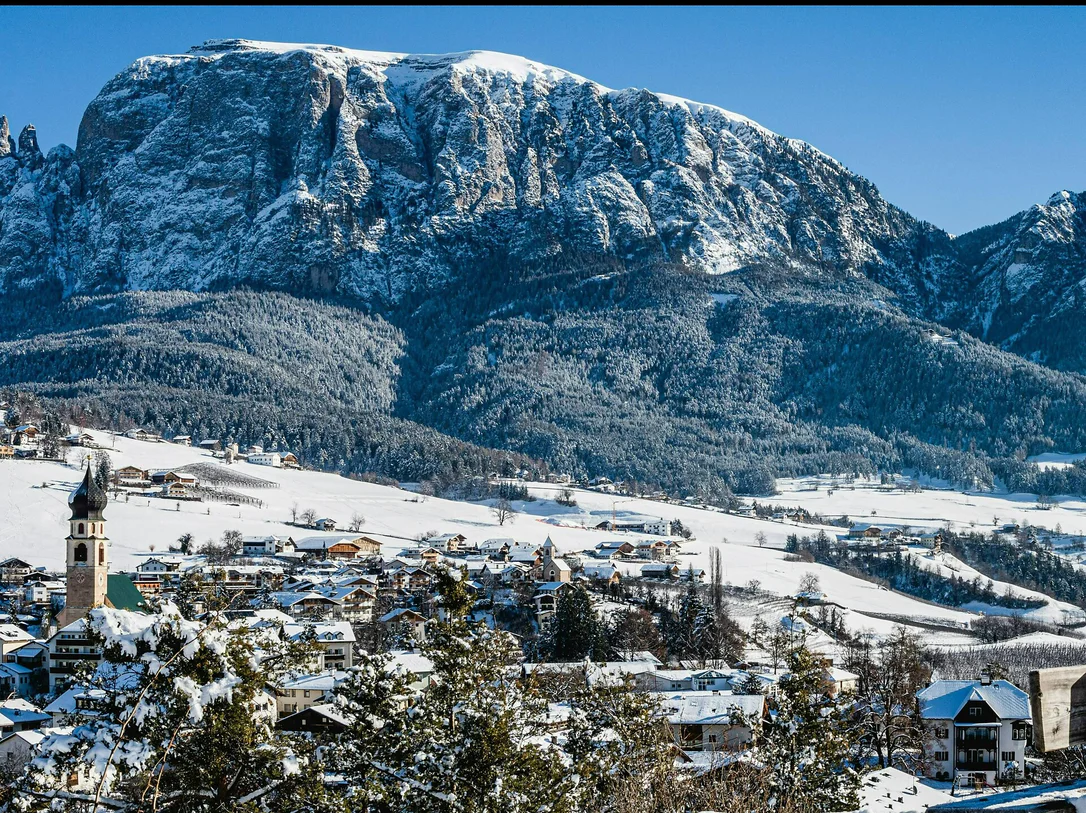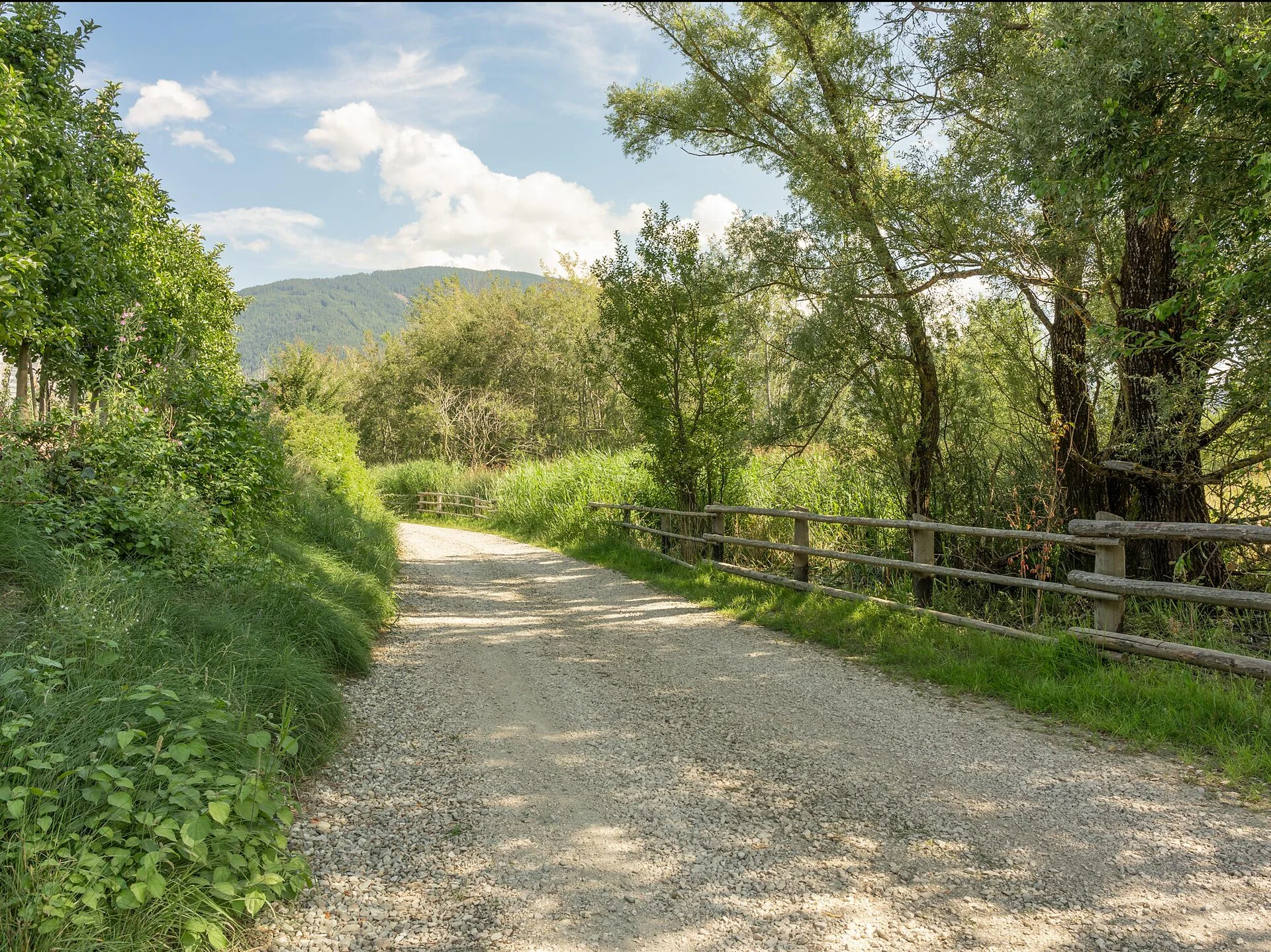Der Kobler-Hof am Mühlbach
© Ludwig Veith
Dieses hart am Mühlbach stehende Haus mit Ökonomie-Gebäude entstand in seinen baulichen Grundelementen wohl in der ersten Hälfte des 16. Jahrhunderts. Diese Bauzeit-Annahme dürfte die im Dachstuhlgebälk eingravierte Jahreszahl von 1541 untermauern. Das einstöckige Wohnhaus mit Dachgeschoss beruht auf einem dreibogigen, tonnengewölbten Durchgang (Ladum) zu den Kellern, dem Stall und Hofraum. Über eine gemauerte Freitreppe gelangt man durch eine rundbogige Eingangstüre in die tonnengewölbte Labe, Küche, der getäfelten Stube und den Kammern. Links des südseitigen Eingangsbereiches ist das Wirtschaftsgebäude mit nordseitig befindlichem Scheunenzugang, angebaut.
In der Frage nach den Bewohnern dieses „Engadiner-Durchgangs-Hofes“ nennt uns der Steuerkataster aus dem Jahre 1694/96 Christian Gabriel der Ältere als Besitzer dieses bäuerlichen Eigentums zusammen mit einem „Mannmahd“ großen Anger. Aus diesem Eigengut reichte Gabriel dem Pfarrwidum zu Schluderns, der Skt. Johannkirche zu Prad und dem „Viztumamt“ in Fürstenburg einen geschaffenen Getreide-, Schmalz- bzw. Schaf-Zins. Zurzeit S.M. Kaiserin Maria Theresia um 1775 erfahren wir aus jenen Steuerfassionen, dass diese „zu unterist des dorfs Pradt“ liegende Hofstelle des Mathias Koch aus einem Haus mit einer Stube, einer Küche, drei Kammern, zwei Keller sowie Stall und Stadel bestand. Der Hof samt einem Tagmahd und 259 Klafter (3.218 m²) großen zweimähdigem Anger mit Obstbäumen besetzt war eingefriedet. In der Folgezeit muss das Anwesen dann geteilt worden sein, denn um 1813 bewohnen es die Familien Georg Koch und Simon Gander und 1857 haben es Johann Koch und Josef Theiner inne. Im Jahre 1871 besitzt dann Anton Kobler den ehemaligen Anteil der Koch und 1875 besitzt jenen der Gander, Michael Mailänder. Der Enkel des ersteren gleichen Namens, übte in diesem Haus bis in den 1950-er Jahren die Tätigkeit eines Webers aus, das ihn den Vulgonamen „Weber-Touni“ einbrachte. In Ausübung verschiedenster Dienste, bekleidete der Weber-Touni auch das Amt des „Gemeinde-Ausrufers“ – ein jahrhundertealter Brauch-, dem er sich je nach Bedarf immer sonntags nach dem Hochamt am Kirchplatz sorgfältig und lautstark verpflichtete. Für diesen althergekommenen Dienst bekam er laut „Nittbach-Wasservertrag“ von 1510 von den „Alt-Feld-Besitzern“ zu Tschengls, die wegen des „Nittbach-Wassers“ der Gemeinde Prad seit dato Getreidezins schuldeten, sechs Mutt Korn. Dieses holte der „Weber-Touni“ alljährlich um 13 Uhr des 24. Mai vom Kirchplatz in Tschengls mit Ross und Wagen ab. - Seit 1. Juni 1981 ist das dreigeschossige Haus mit seinen bauzeittypischen Merkmalen unter Denkmalschutz und ab 1990 im Besitz von Robert Kobler und Manfred Michael Wunderer.


























































































